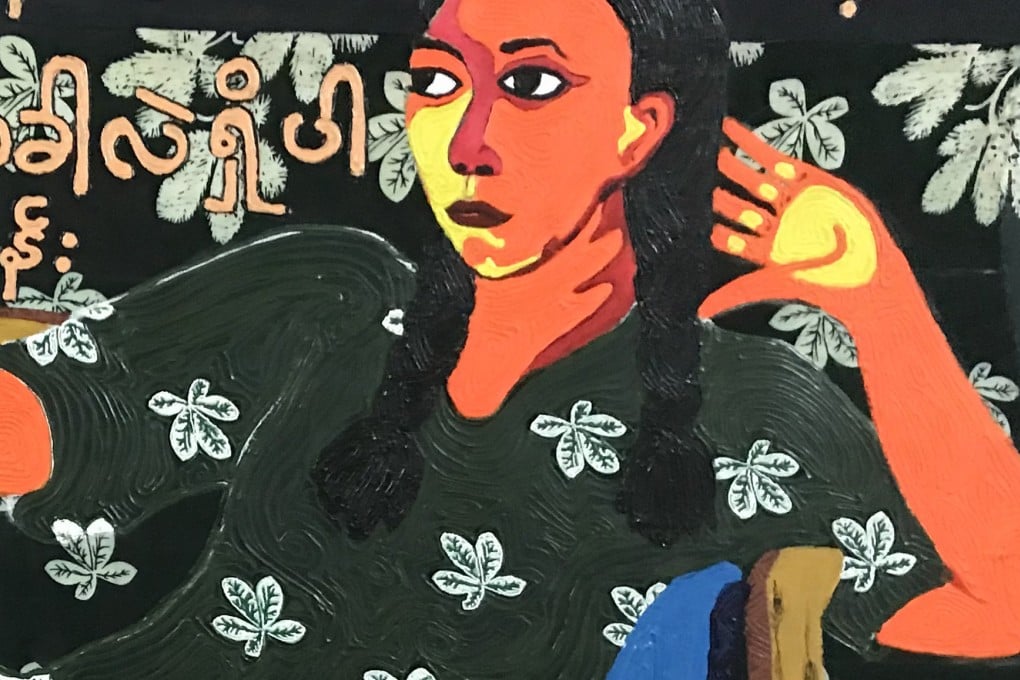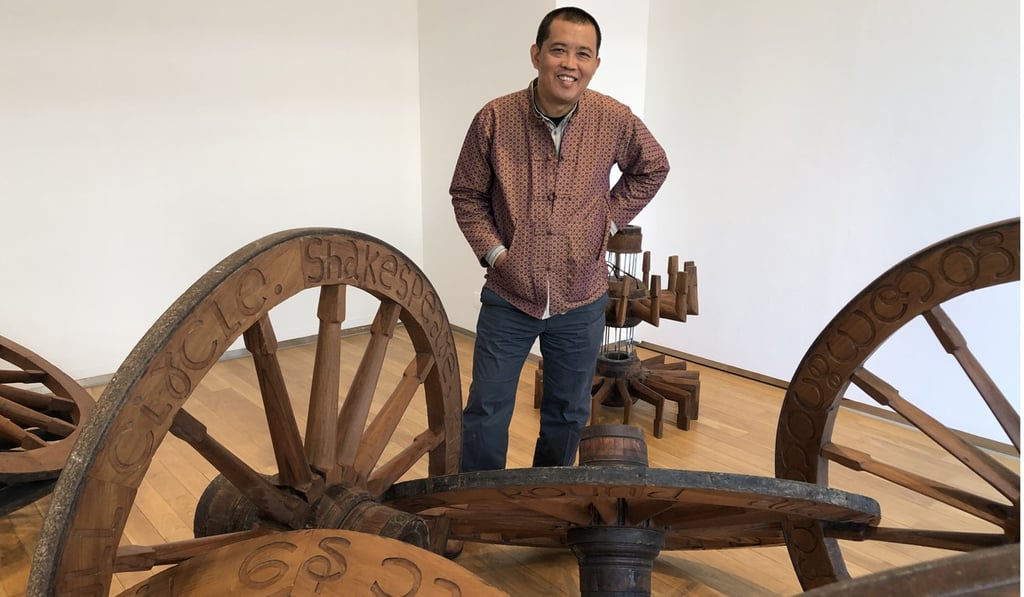Myanmar artist’s Hong Kong exhibition taps Buddhism, folklore and politics
- Former student activist produced art while he was jailed for seven years
- Some of his work brings to mind Ai Weiwei’s sculptures made from found objects – a response, like the Chinese artist’s work, to rapid social change

Many people in Myanmar will think that Htein Lin is left emasculated after he painted on women’s lungis, the sarong-like wraps that he has used as canvas for a new series called “Skirting the Issue”. In Burmese Buddhism, there is a concept called hpone which dictates that men are superior to women. Adding insult to injury, local folklore also insists that the lungis that women wear below their waist are dirty and jinx men by sucking dry their hpone.
This belief is so wedded to the military’s perception of its own power that a woman was jailed for six months in 2015 for posting a picture on Facebook of Aung San Suu Kyi in a green lungi side by side with an image of the commander-in-chief wearing a uniform in a similar shade.
“When I made a social media appeal for women to give me their used lungi and to talk about their feelings on hpone, the response was overwhelming,” the 52-year-old artist says at his solo exhibition in Hong Kong. “People really wanted to participate in the debate. Some of the women surprised me. Even some of the younger ones would say they do not feel comfortable washing their lungis with men’s, and when they hang their lungis to dry, they still make sure they are hung near the ground in case men get caught walking beneath them, which is supposed to be really bad.”
Six of his lungi paintings hang inside a section of the gallery lined with the same bamboo mats commonly used in Myanmar households when Htein Lin was growing up. On each is a portrait of the lungi’s owner wearing the same fabric as the background. He has covered their faces and limbs with swirls of wild, fauvian colours in patterns reminiscent of how Myanmese women apply thanaka paste (a cosmetic made from ground bark) on their skin. Each woman has written on the fabric their short answer to Htein Lin’s question.

Sandar Thet says she plays it safe: “Although I don’t know whether hpone is real or not, I don’t want my husband to pass under the htamein laundry line.” (Htamein means a woman’s skirt.)